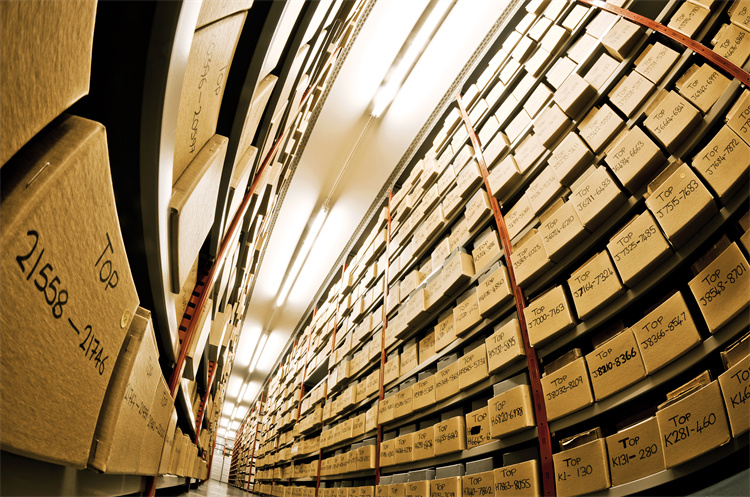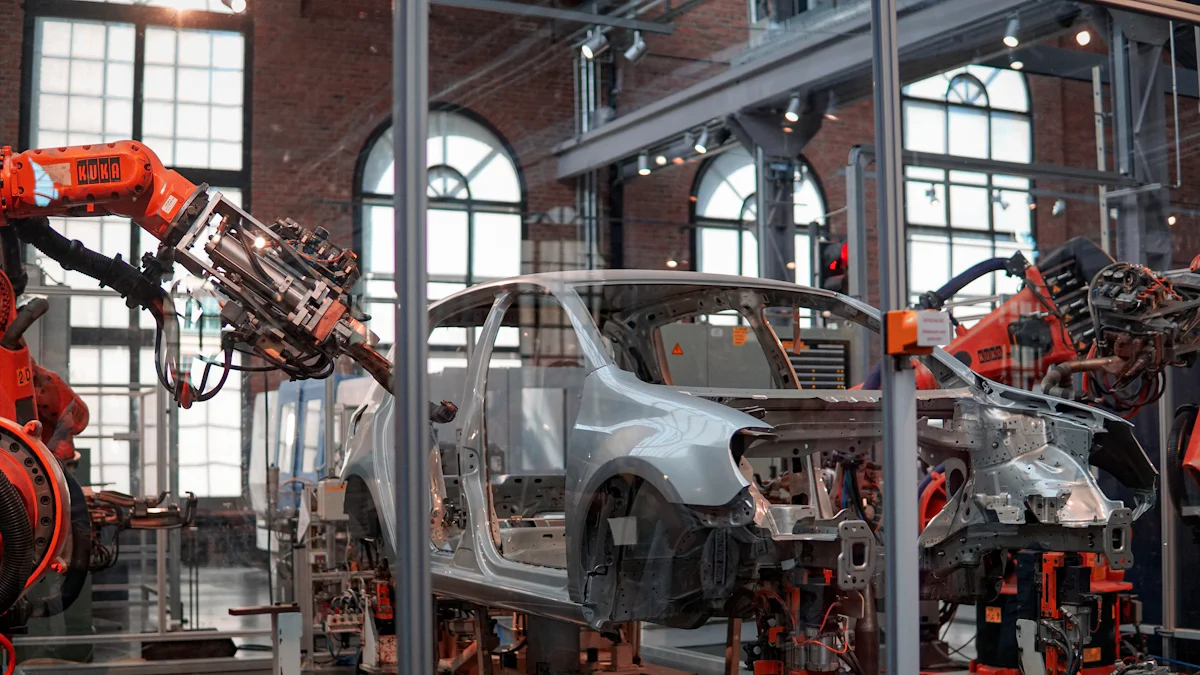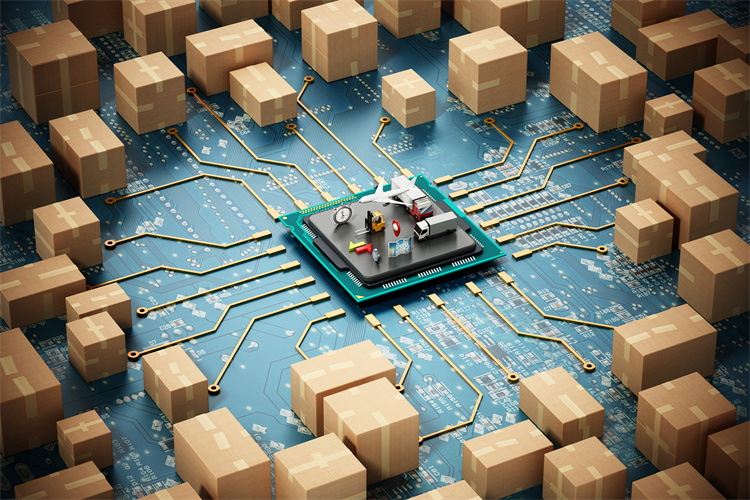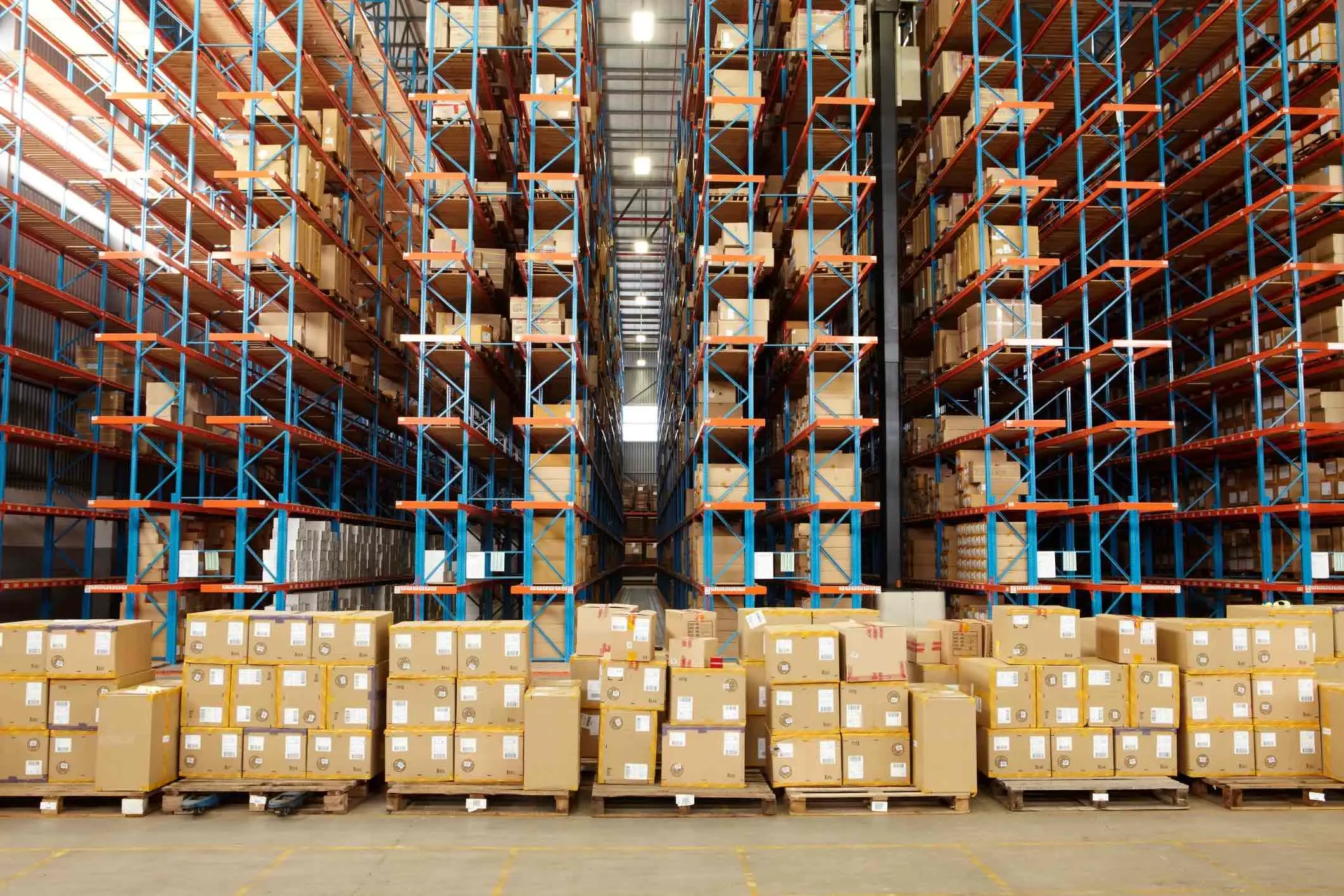How Smart Delivery Revolutionizes Logistics Efficiency in 2025

Smart delivery is reshaping logistics in 2025 by solving critical challenges. Optimized routes and AI-driven tools reduce fuel costs and delivery times. Real-time tracking builds trust and enhances customer satisfaction. Automation minimizes errors and boosts efficiency. With robotics accelerating order processing, you experience faster deliveries and lower operational costs, transforming the logistics landscape.
Key Takeaways
Smart delivery uses AI, IoT, and machines to make deliveries faster and better.
Live tracking helps customers see where their packages are anytime.
Using smart delivery tools can save money and use resources wisely.
Understanding Smart Delivery and Its Core Components
What is Smart Delivery?
Smart delivery refers to the integration of advanced technologies like artificial intelligence (AI), the Internet of Things (IoT), and automation to streamline logistics operations. It focuses on improving the speed, accuracy, and transparency of deliveries. By combining real-time data and intelligent systems, smart delivery ensures that goods move efficiently from warehouses to customers.
The core components of smart delivery work together to enhance logistics efficiency. These components include tracking systems, condition monitoring, and warehouse management tools. Here's how they function:
Component | Function |
|---|---|
Real-Time Location Tracking | Utilizes GPS, RFID, and IoT sensors for monitoring the precise location of goods in transit. |
Asset Tracking | Involves continuous monitoring of vehicles and equipment to optimize their utilization. |
Condition Monitoring | Employs sensors to track environmental conditions, ensuring the safety of sensitive goods. |
Package Tracking | Uses barcodes and RFID tags to monitor individual packages throughout their journey. |
Warehouse Management Systems | Integrates tracking information for efficient inventory and order management in warehouses. |
These components create a seamless logistics network, ensuring timely deliveries and reducing operational inefficiencies.
Role of AI, IoT, and Automation in Revolutionizing Shipping and Logistics
AI, IoT, and automation play a pivotal role in revolutionizing shipping and logistics. AI enhances demand forecasting by analyzing historical sales data and market trends. This allows you to predict customer needs, optimize inventory, and respond quickly to changes. Predictive analytics also improve route planning, reducing delays and operational costs.
IoT devices, such as sensors and GPS trackers, provide real-time updates on shipments. These tools ensure transparency and help you monitor goods during transit. For example, condition monitoring sensors protect sensitive items like medical supplies by tracking temperature and humidity levels.
Automation further transforms logistics by streamlining repetitive tasks. AI-driven systems like J.B. Hunt’s Carrier 360° platform automate load matching and pricing, ensuring faster deliveries. Additionally, programs like Convoy's Automated Reloads have reduced empty-mile emissions by 45%, highlighting the environmental benefits of automation.
With 88% of carriers prioritizing AI for fleet optimization, these technologies are setting new standards for efficiency. Together, AI, IoT, and automation ensure that smart delivery systems meet the demands of modern logistics.
Key Benefits of Smart Delivery for Logistics
Route Optimization and Faster Deliveries
Smart delivery systems excel in route optimization, ensuring faster and more efficient deliveries. AI algorithms analyze traffic patterns and weather conditions to determine the most efficient paths. Dynamic routes adapt in real-time, leveraging current data to avoid delays. This reduces travel time and fuel consumption, directly enhancing logistics efficiency.
Efficient allocation of vehicles and personnel ensures optimal resource usage.
Improved delivery accuracy builds trust and strengthens your customer relationships.
Timely deliveries, even during unforeseen circumstances, improve customer satisfaction.
With these advancements, you can achieve faster last-mile delivery while reducing operational costs.
Real-Time Tracking and Transparency
Real-time tracking systems provide accurate updates on shipment status, enhancing transparency. You can monitor shipments at every stage, fostering trust and improving service quality. Advanced tracking technology, such as IoT sensors and GPS, ensures seamless visibility across the supply chain.
Blockchain integration improves data integrity, reducing discrepancies.
Real-time tracking strengthens customer relations and positively impacts your brand image.
Proactive issue resolution becomes possible, ensuring smooth operations.
These features make real-time tracking an essential component of smart logistics services.
Cost Reduction and Operational Efficiency
Smart delivery systems significantly reduce costs while enhancing operational efficiency. Automation streamlines repetitive tasks, minimizing errors and saving time. AI-powered tools optimize inventory management and reduce waste.
Efficient vehicle capacity utilization lowers transportation expenses.
Predictive analytics improve demand forecasting, reducing overstocking.
Automated processes ensure faster last-mile delivery, cutting labor costs.
By adopting these technologies, you can enhance logistics efficiency and achieve substantial cost savings.
Enhanced Customer Experience with Smart Logistics Services
Smart logistics services focus on a customer-centric approach, delivering an enhanced customer experience. Real-time tracking allows customers to monitor their shipments, reducing anxiety. Proactive communication keeps them informed about order status, improving satisfaction.
Personalized services cater to individual preferences, boosting loyalty.
Faster delivery times and easy returns simplify the process for your customers.
Accurate and transparent information builds trust and strengthens relationships.
These features ensure that your customers enjoy a seamless and satisfying experience, making smart delivery a game-changer in logistics.
Technologies Driving Smart Delivery

AI-Powered Delivery Management Systems
AI-powered delivery management systems transform logistics by automating processes and optimizing operations. These systems use advanced algorithms to analyze traffic, weather, and delivery windows, enabling dynamic route planning. This ensures faster deliveries and reduces fuel consumption. Real-time data integration enhances delivery accuracy, minimizing missed shipments and improving customer satisfaction.
Predictive analytics play a crucial role in demand forecasting. By analyzing historical data, you can anticipate future needs, optimize inventory, and allocate resources effectively. AI also automates routine tasks, increasing operational efficiency and throughput. Businesses using these systems handle more deliveries without additional resources, reducing costs and boosting profitability.
Key benefits of AI-powered delivery management include:
Real-time tracking for shipment updates, fostering transparency.
Cost reduction through optimized routes and resource utilization.
Enhanced customer experience with personalized services.
These systems not only improve logistics efficiency but also contribute to sustainability by lowering carbon emissions.
IoT Devices and Connected Infrastructure
IoT devices and connected infrastructure enable seamless communication across logistics networks. Real-time tracking provides up-to-the-minute location data, improving route management and delivery accuracy. RFID tags and sensors automate inventory tracking, ensuring accurate stock levels and timely alerts for low supplies.
Vehicle tracking systems monitor location, speed, and route efficiency, helping you optimize fleet performance. IoT also supports predictive maintenance by analyzing vehicle data to prevent breakdowns, reducing downtime. Driver behavior monitoring enhances safety and fuel efficiency by providing actionable feedback.
Innovative IoT applications include:
5G networks for faster data transmission.
Smart warehouses with automated inventory management.
Blockchain for secure and transparent transaction tracking.
These technologies create a connected ecosystem, streamlining operations and enhancing delivery reliability.
Automation and Robotics in Logistics
Automation and robotics revolutionize logistics by improving speed and accuracy. Warehousing automation uses stacker cranes for efficient storage and retrieval, enabling 24/7 operations with fewer errors. Automated guided vehicles (AGVs) and conveyors streamline internal product movement, reducing costs and enhancing delivery speed.
Order processing benefits from goods-to-person picking systems, which simplify assembly and lower operational complexity. Collaborative robots (cobots) work alongside humans, boosting productivity and safety. Edge computing enables real-time decision-making for autonomous robots, further improving task efficiency.
These advancements allow you to scale operations while maintaining high efficiency. Automation reduces manual labor, accelerates order fulfillment, and ensures consistent service quality.
JUSDA’s Role in Revolutionizing Shipping and Logistics
How JUSDA’s China-Europe Express Rail Enhances Smart Delivery
JUSDA’s China-Europe Express Rail transforms delivery by bridging the gap between speed and cost in international logistics. This service offers a faster alternative to sea freight and a more affordable option than air freight. You can transport goods like electronics, clothing, and medical supplies across continents in just 15-20 days. This balance between speed and cost makes it ideal for businesses seeking supply chain optimization.
The rail service ensures smooth customs operations and minimizes delays. JUSDA’s expertise in intercontinental logistics aligns resources efficiently, reducing the risk of stranded goods. The service also supports sea-rail intermodal solutions, connecting markets in Japan, South Korea, and Taiwan to Europe. By leveraging this innovative rail network, you can achieve greater logistics efficiency and meet customer satisfaction goals.
JusLink Intelligent Supply Chain and Its Impact on Logistics Efficiency
JUSDA’s JusLink Intelligent Supply Chain platform enhances logistics efficiency by integrating IoT, cloud computing, and big data analytics. This platform connects every part of the supply chain, enabling seamless information sharing and collaboration. You can optimize resource allocation and streamline production processes, which improves productivity and reduces costs.
JusLink adapts to the unique needs of industries like electronics and automotive. It provides tailored solutions that respond to consumer demands, ensuring supply chain optimization. Real-time data insights allow you to make informed decisions, reducing waste and improving delivery accuracy. With JusLink, you can achieve a smarter, more efficient logistics network that supports your business growth.
Future Trends in Smart Delivery

Autonomous Vehicles and Drones in Smart Logistics Services
Autonomous vehicles and delivery drones are transforming logistics by improving operational efficiency and reducing labor costs. These technologies are reshaping the industry with their ability to handle last-mile delivery tasks more effectively. For instance, the global autonomous last-mile delivery market, valued at $0.9 billion in 2023, is projected to grow to $4.2 billion by 2030, with a CAGR of 22.7%. Similarly, the drone package delivery market is expected to reach $31,188.7 million by 2028, growing at a CAGR of 53.94%.
Aspect | Details |
|---|---|
Current Market Value | $0.9 billion in 2023 |
Projected Market Value | $4.2 billion by 2030 |
CAGR | 22.7% |
These advancements depend on regulatory approvals and safety measures. Once fully deployed, they will revolutionize logistics efficiency by enabling faster and more reliable deliveries.
Eco-Friendly and Sustainable Logistics Solutions
Sustainability is a growing focus in logistics. Companies are adopting renewable energy sources, such as solar-powered warehouses and electric vehicles, to reduce carbon emissions. Efficient route planning minimizes fuel consumption, while eco-friendly packaging materials reduce waste. Reverse logistics and recycling initiatives promote circularity, further enhancing sustainability.
Smart delivery services also optimize urban logistics by using electric or hybrid vehicles, improving air quality and reducing congestion. These efforts not only lower the carbon footprint but also contribute to public health and customer satisfaction. Green transportation options and warehouse optimization ensure a balance between logistics efficiency and environmental responsibility.
Blockchain Integration for Secure and Transparent Transactions
Blockchain technology enhances security and transparency in logistics. Its immutability ensures that data cannot be altered without consensus, maintaining integrity. Cryptographic encryption secures transactions, while traceability allows you to verify the movement of goods.
Immutability prevents unauthorized changes to records.
Cryptographic encryption safeguards sensitive information.
Traceability ensures accountability across the supply chain.
Provenance verification builds trust by confirming product authenticity.
By integrating blockchain, you can streamline operations and improve logistics efficiency. This technology fosters trust and reliability, making it a cornerstone of future smart delivery systems.
Overcoming Challenges in Smart Delivery Adoption
Addressing Infrastructure Costs and Scalability
Adopting smart delivery systems often requires significant investment in infrastructure. You may face challenges like upgrading warehouses, integrating IoT devices, and deploying automated systems. These costs can seem overwhelming, especially for small businesses. However, scaling these technologies incrementally can help you manage expenses. Start by identifying high-impact areas, such as route optimization or automated warehousing, to maximize immediate value.
Scalability also becomes a concern as your business grows. Smart logistics solutions, like AI-powered delivery management systems, allow you to handle increased demand without proportional cost increases. By leveraging automation, you can reduce manual intervention and improve operational efficiency. This approach ensures that your logistics network adapts to growth while maintaining cost-effectiveness.
Navigating Regulatory and Compliance Issues
Regulatory and compliance challenges can complicate the adoption of smart delivery technologies. You must navigate guidelines for drones and autonomous vehicles, address privacy concerns related to data collection, and ensure equitable access to services.
Regulatory bodies need to establish clear rules for integrating autonomous technologies.
Privacy concerns arise from the use of IoT sensors and GPS trackers.
Equitable access ensures that smart delivery benefits all communities, not just urban areas.
Traffic congestion and delivery density further complicate compliance. Collaborating with local authorities and urban planners can help you align your logistics operations with existing regulations. This proactive approach minimizes disruptions and ensures smooth implementation.
Strategies for Seamless Implementation of Smart Logistics Services
Implementing smart logistics services requires a strategic approach. Start by adopting key technologies like real-time tracking systems, AI-powered route optimization, and automated warehousing solutions. These tools enhance logistics efficiency and improve customer satisfaction.
Use GPS, RFID, and IoT sensors for real-time tracking of products and assets.
Monitor environmental conditions during transportation to protect sensitive goods.
Integrate tracking data with warehouse management systems to streamline inventory processes.
Automation plays a crucial role in reducing time spent on repetitive tasks. By automating receiving, arranging, and dispatching merchandise, you can improve productivity and profitability. Identifying areas like load matching and route optimization for automation ensures maximum impact. This step-by-step approach simplifies the transition to smart delivery systems.

JUSDA Solutions
To provide you with professional solutions and quotations.
Smart delivery transforms logistics efficiency by optimizing routes, reducing costs, and enhancing customer satisfaction. Adopting technologies like AI-driven tools, drones, and autonomous vehicles ensures faster deliveries and sustainable operations. These advancements give you a competitive edge in 2025. JUSDA’s innovative solutions, such as the China-Europe Express Rail and JusLink platform, redefine logistics, empowering your business to thrive in a dynamic global market.
See Also
Transforming Logistics: The Future of AI Supply Chains
Paving the Way: Digital Innovations in Future Logistics
Transforming Logistics Through Innovative Supply Chain Solutions
Enhancing Efficiency: Innovations in AI-Driven Supply Chains
